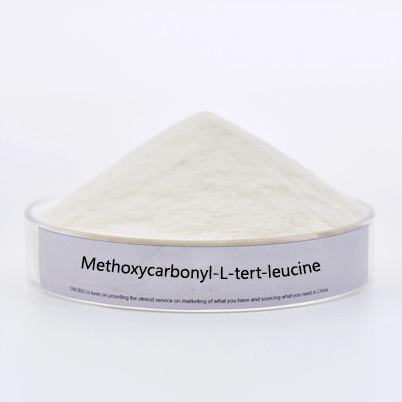- E-mail : info_medicalmarketing@jindunmedical.com
- Phone : +86 21 64057580
- Address : Shanghai China
How to use Pregabalin? Here's the full summary of usage!
For medical professionals only
Clinical decision making, can be simpler
Pregabalin is the drug of choice for the clinical treatment of neuropathic pain, and the editors have summarized the superb usage about it, let's take a look!
Pregabalin belongs to non γ- Aminobutyric acid (GABA) receptor agonist or antagonist is a new type of calcium channel regulator, which can block voltage dependent calcium channels and reduce the release of neurotransmitters. Clinically, it is mainly used for neuralgia related to diabetes peripheral neuropathy, post herpetic neuralgia and auxiliary treatment of adult partial seizures, generalized anxiety disorder, central neuralgia (including neuralgia accompanying spinal cord injury, stroke and multiple sclerosis) and fibromyalgia.
01 Postherpetic neuralgia
1.1
Adults (domestic use)
1.1.1 Dosage
The recommended dose is 75mg or 150mg twice daily, or 50mg or 100mg three times daily.
The starting dose can be 75mg twice a day (150mg/day) or 50mg three times a day (150mg/day). The dose may be increased to 150mg twice daily (300mg/day) within one week depending on efficacy and tolerability. Since this product is mainly cleared by renal excretion, the dose should be adjusted in patients with reduced renal function. The above recommended dose is indicated for patients with creatinine clearance ≥ 60 mL/min.
Patients who do not receive adequate pain relief after 2-4 weeks of 300 mg/day may be increased to 300 mg twice daily (600 mg/day) or 200 mg three times daily (600 mg/day) if the product is tolerated. Due to the dose-dependent nature of adverse effects and the fact that adverse effects can lead to higher discontinuation rates, doses above 300 mg/day should only be used in patients with persistent pain who tolerate a dose of 300 mg/day [1].
1.2
Adults (FDA usage)
1.2.1 Dosage
Extended-release tablets: the starting dose is 165 mg per dose, once daily. This may be increased to 330 mg once daily within 1 week depending on individual patient response and tolerability. Patients who do not experience adequate pain relief with 330 mg daily during 2-4 weeks of therapy may be increased to 660 mg once daily if pregabalin is tolerated.
Due to the dose-dependent nature of adverse reactions and the fact that adverse reactions can lead to higher rates of discontinuation, doses above 330 mg/day should only be used in patients with persistent pain at tolerable doses of 330 mg/day. The maximum recommended dose of pregabalin extended-release tablets is 660 mg once daily [4].
02 Fibromyalgia
2.1
Adults (domestic use)
2.1.1 Dosage
The recommended dose for the treatment of fibromyalgia is 300-450mg/day. The starting dose should be 75 mg twice daily (150 mg/day) and may be increased to 150 mg twice daily (300 mg/day) within one week depending on efficacy and tolerability [1].
Patients who do not adequately benefit from 300 mg/day may be increased to 225 mg twice daily (450 mg/day).
Although there are clinical trials applying this product at 600 mg/day, there is no evidence of additional significant efficacy benefit at this dose, and this dose is poorly tolerated. Considering the dose-dependent nature of adverse effects, doses above 450 mg/day are not recommended [1].
03 Neuropathic pain associated with diabetic peripheral neuropathy
3.1
Adults (FDA usage)
3.1.1 Dosage
Capsules and oral solution: for patients with creatinine clearance ≥ 60 mL/min, the maximum recommended dose of pregabalin is 100 mg three times daily (300 mg/day). The starting dose is 50 mg 3 times daily (150 mg/day). The dose may be increased to 300 mg/day within 1 week depending on efficacy and tolerability.
Although studies have also been conducted with a pregabalin dose of 600 mg/day, there was no evidence of additional significant efficacy at this dose and the dose was poorly tolerated. Considering the dose-dependent nature of adverse effects, doses above 300 mg/day are not recommended [2-3].
Extended-release tablets: the starting dose is 165 mg per dose, once daily. This may be increased to 330 mg once daily within 1 week depending on individual patient response and tolerability. The maximum recommended dose of pregabalin extended-release tablets is 330 mg once daily and is not listed in the full prescribing information.
Although studies have also been conducted with a pregabalin dose of 600 mg/day, there was no evidence of additional significant efficacy at this dose and the dose was poorly tolerated. Considering the dose-dependent nature of adverse effects, doses above 330 mg/day are not recommended [4].
04 Adjunctive treatment of partial-onset epilepsy
4.1
Adults (FDA usage)
4.1.1 Overview
Pregabalin is indicated for the adjunctive treatment of partial-onset epilepsy in patients 1 month of age and older [2-3].
4.1.2 Dosage
Capsules and oral solution: the recommended doses for adults and pediatric patients aged 1 month and older are listed in Table 1. The total daily oral dose was divided into 2 or 3 doses as shown in Table 1. In pediatric patients, the recommended dosing regimen depends on body weight. The dose administered may be increased gradually over a 1-week period depending on clinical response and tolerability.
Table 1. Recommended doses for adults and pediatric patients aged 1 month and older
| Age and weight | Recommended starting dose | Maximum recommended dose | Dosing frequency |
| Adult (217 years old) | 150mg/day | 600mg/day | divided into 2 or 3 doses |
The efficacy and adverse events of pregabalin are dose dependent.
The effect of the rate of dose escalation on the tolerability of pregabalin has not been formally studied.
The efficacy of adjunctive pregabalin in patients taking gabapentin has not been evaluated in controlled trials. Therefore, it is not possible to provide a recommended dose of pregabalin in combination with gabapentin [2-3].
05 Neuropathic pain after spinal cord injury
5.1
Adults (FDA usage)
5.1.1 Dosage
Capsules and oral solution: The recommended dose range for pregabalin for the treatment of neuropathic pain associated with spinal cord injury is 150-600 mg/day. The recommended starting dose is 75 mg twice a day (150 mg/day).
Depending on efficacy and tolerability, the dose may be increased to 150 mg twice daily (300 mg/day) within 1 week.
Patients who do not experience adequate pain relief on 150 mg twice daily for 2-3 weeks of therapy may be increased to a maximum of 300 mg twice daily if pregabalin is tolerated [2-3].
-
date
2022-10-09
-
location
Shanghai, China










































